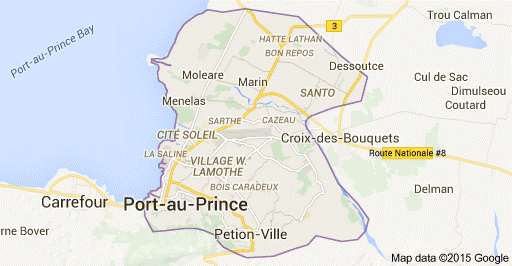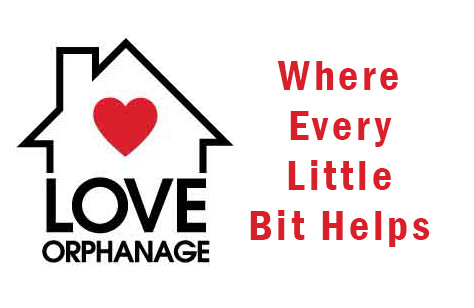 On January 1st, 1804, Haiti became the first independent republic in Latin America, the first post-colonial independent black-led country in the world, and the only republic whose independence was gained as a result of a successful slave revolt. Despite Haiti’s triumphant liberation, the country has experienced incessant political turmoil, international sanctions and economic, health and educational instability. As a result many citizens, particularly children live in extreme poverty. With 80% of the population already living below the poverty line, Haiti is one of the poorest countries in the Western Hemisphere.
On January 1st, 1804, Haiti became the first independent republic in Latin America, the first post-colonial independent black-led country in the world, and the only republic whose independence was gained as a result of a successful slave revolt. Despite Haiti’s triumphant liberation, the country has experienced incessant political turmoil, international sanctions and economic, health and educational instability. As a result many citizens, particularly children live in extreme poverty. With 80% of the population already living below the poverty line, Haiti is one of the poorest countries in the Western Hemisphere.
On January 12th, 2010, a catastrophic 7.0 magnitude earthquake further crippled an already destitute Haiti, leaving tens of thousands of children orphaned and more than 1 million people homeless. The increased instability in the capital makes it difficult for officials and humanitarian groups to monitor the orphans on the streets, thus leaving them vulnerable to trafficking, abduction and sexual abuse.
 Much of the capital city, Port-au-Prince, and neighboring areas were destroyed. The tremor inflicted $7.8 billion in damages and led to the death of more than 222,500 people and displaced more than 1.5 million. The earthquake further marginalized the high percentage of Haitians living in poverty, women and especially children.
Much of the capital city, Port-au-Prince, and neighboring areas were destroyed. The tremor inflicted $7.8 billion in damages and led to the death of more than 222,500 people and displaced more than 1.5 million. The earthquake further marginalized the high percentage of Haitians living in poverty, women and especially children.
Since the earthquake, nearly 150, 000 people still live in tent camps throughout the region, with no water or electricity. According to economist at the Inter-American Development Bank, the estimate cost of rebuilding Haiti after the 2010 catastrophe is between $8 billion and $14 billion. Haiti’s recovery relies on the assistance of foreign aid to support the country in reconstructing its economy and infrastructure, and also development of jobs and educational and training programs, to provide the people with opportunities to build self-sufficiency and a stable economy.
By helping to support Love Orphanage through education, health, and living needs, you will help to uplift and empower orphaned children who have been impacted by the earthquake.
FACTS & STATS
General
- Location: Caribbean, Island of Hispaniola.
- Language: French (official), Haitian Creole (official)
- Government: Republic.
- Capital: Port-Au-Prince.
- National Holiday: Independence Day, 1 January (1804)
- National Population: 9,996,731 (around 1.2 million in the capital Port au Prince and more than 2.5 to 3 million live in its metropolitan area, including the rapid growing slums on the hillsides above the city.)
- Average Life Expectancy Haiti: 63.1 years.
- Average Life Expectancy United States: 78.7 years.
- Labor Force: 38.1% agriculture, 11.5% industry, 50.4% services.
- Gross National Income (2013, million USD): $810.
Education
- An estimated 33% of children were not enrolled in school before the earthquake.
- 40% of children between the age of 5 to15 (approximately one million) do not attended school.
- Dropout rate: 60% (before receiving primary certificate).
- Primary education enrolment: 76%
- Secondary education enrollment: 22%
- Average years of schooling children complete by their 18th birthday is 6 years. Only about 10% of all Haitian children enrolled in elementary school go on to a high school.
Health
- 49.8% Haitians are chronically undernourished.
- 81,600 children under five are acutely malnourished.
- An estimated 2.1 million Haitians face severe food insecurity in 2013.
- HIV prevalence: 2.1% of the population.
- Anemia affects 59% of Haitian children between the ages of six months and five years.
Child Labor
- Working children, ages 5-14.
- 29% More than 10% of children die before age five.
- Haiti has the highest percentage of orphans of any country in the Western Hemisphere. Before the 2010 earthquake, the United Nations estimated there were 430,000 orphans.
Haitian Culture
- Religion is a fundamental part of the Haitian culture. 80% Catholic, 16% Protestant (various dominations) *About half of the population practice some aspect of voodoo.
- Food: Haitian cuisine consist of hold and flavorful spices that incorporates African, French and native Taino and Spanish techniques. Haitians grow corn, rice, bananas, mangoes, avocados, and other tropical fruits and vegetables such as green beans, potatoes, squash, okra, cabbage, and eggplant. A typical meal usually includes one or two varieties of rice prepared with either red or black beans, plantains which are usually parboiled, sliced, and deep fried. Those who can afford it eat deep-fried chicken or other meats such as goat, beef, and pork. Pork is often fried and barbecued (grio) and is very popular. Seafood, including barbecued lobster, shrimp, and many varieties of fish are also served in Haitian cuisine.
- Music: Haitian music draws from African rhythm, French, Spanish elements and Taino influences. Styles of music derive from voodoo ceremonial traditions, Rara parading music, Twoubadou, Jazz, Rasin movement, Hip Hop, Compas, Tropicana and Meringues.
Sources: UN, Factbook CIA, World Bank, US Dept. of Labor
